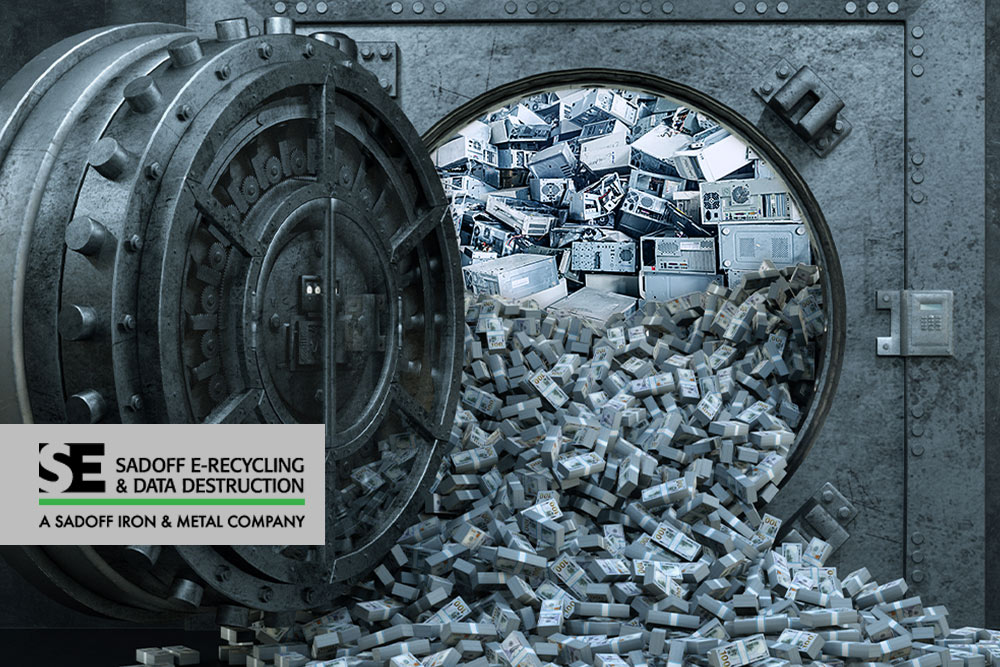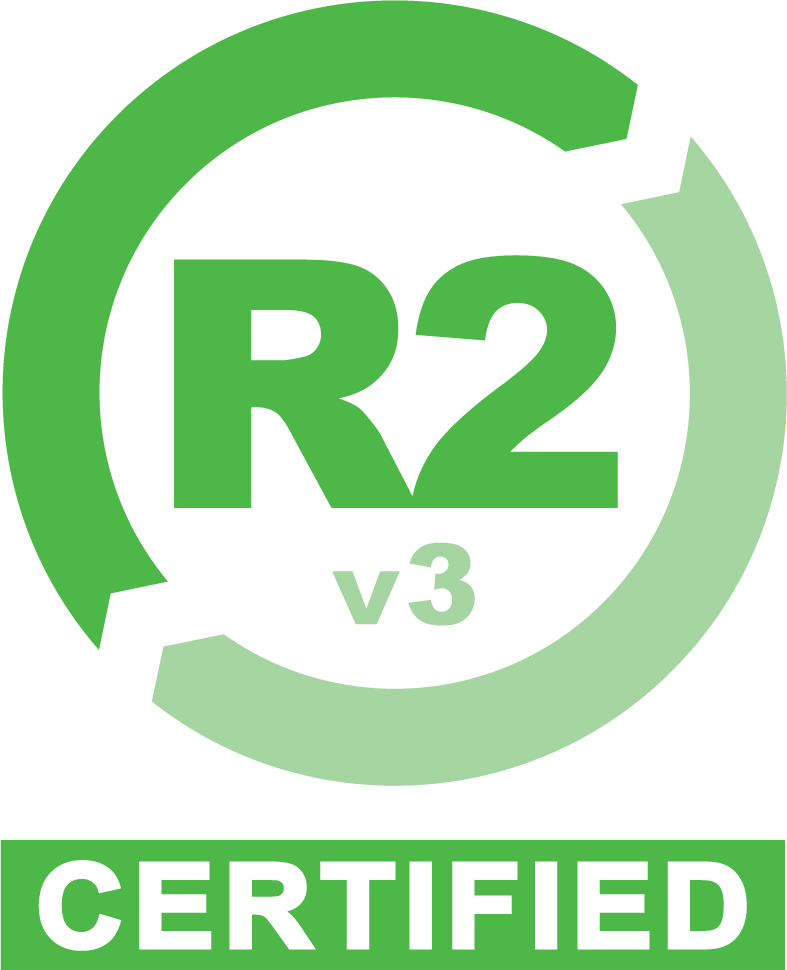The Real Value of E-Waste Components – i.e. What’s in it for Us?
 4
4 Jun
When people first hear about e-recycling, they’re often surprised to learn that some of the key materials recovered from obsolete electronics are precious metals like gold, silver, and platinum. This fact immediately implies that there’s great wealth to be had for those with the right equipment, a little know-how, and some manpower to extract it from discarded computers, cellphones, laptops, and other tech.
Pound-for-pound, those materials are quite valuable. But when one considers the incredibly small amounts of precious metals contained inside the typical electronic device, and the relatively high cost of the labor and equipment needed to obtain it, the shiny visions of untapped riches fade fairly quickly.
What are the metals inside common electronic devices really worth?
According to the EPA, for every one million cell phones recycled, 35 thousand pounds of copper, 772 pounds of silver, 75 pounds of gold, and 33 pounds of palladium can be recovered. With those facts in mind, we can determine the approximate value of the raw materials contained within the average cell phone to be $4.22.
Cell Phones

For computers, the exact numbers are a little more difficult to come by due to the wide variety of models and sizes available, but on average one million computers contain 441 thousand pounds of copper, over 44 hundred pounds of silver, 441 pounds of gold, and 110 pounds of palladium, resulting in an approximate value of $26.92 per computer for the four metals cited.
Computers

Material quantities on laptop computers tend to be about half that of desktop models, so it’s reasonable to assume that the approximate value of these materials to be around $13.46 per laptop.
With values like that, why aren’t there more certified e-recycling companies?
To be honest, it’s hard to make a dollar in the e-recycling business. Although most of the raw materials and components in common electronic devices have value, the sheer complexity of the hardware and the intermingling of materials means it’s exceedingly time-consuming and labor intensive to separate them in a way that makes reuse or recycling cost-effective. This is one of the primary stumbling blocks preventing the general adoption of ecologically sound and ethical e-waste disposal practices. From a financial standpoint, proper e-recycling isn’t a very lucrative business.
At first glance, it would seem worthwhile to gather up electronic devices, melt them down, and simply extract the raw materials from the slurry of liquified components and make a few bucks on each. Unfortunately, it’s not that easy. The time, equipment, and expertise necessary to mechanically and chemically separate and purify these elements makes the process surprisingly expensive. For that reason, the price paid for e-scrap is only a small percentage of the value of the materials contained within it. To make it cost-effective, smelting and refining companies require a significant amount of disassembly, pre-processing, and sorting prior to taking receipt of e-waste materials.
So how does Sadoff E-Recycling and Data Destruction (SEDD) make a profit?
For companies like ours, figuring out ways to maximize the return on each piece of equipment is vital to our success. For instance, when items are brought to SEDD, they aren’t automatically considered dead-on-arrival (DOA). Instead, they’re evaluated and sorted based on the likelihood they can be brought back into service. Those that have promise are tested to determine their exact condition. Potentially functional units are first stripped of data and then sent off for refurbishment and resale, which is more cost-effective than recycling it simply to extract raw materials. Any remaining, non-functional devices are sent on for further processing.
These non-functional units then go through another sorting process to determine the best method(s) for obtaining the highest financial return from that device. Depending on the internal components, it often makes the most sense to manually disassemble the unit and extract various pieces individually due to their higher relative value. Some, like computer motherboards and graphics cards, can be sold as-is to be integrated into another computer. The remaining parts, including cases, power supplies, wiring harnesses, and circuit boards, may be disassembled and the parts sorted further to fully optimize the per-pound return on investment.
After all of that is complete, the pallets, barrels, and boxes containing the various sorted components are sent off to be processed. Some, like graphics cards, may be reused without further processing, while others will go through more mechanical and chemical processes to recover specific materials.
The recycling journey from start to finish for obsolete electronics requires a considerable amount of transportation, material handling, and skilled labor, in addition to vehicles, facilities, and industrial equipment. While the benefits of the entire process far outweigh the downside, the cost of each of these business elements slowly erodes the value of the raw materials contained within each device until only a small profit can be made, even at larger scales.
Proper e-Recycling sounds like a challenging business. Why do you do it?
At SEDD, we don’t lose sleep over tight profit margins. While we consider ourselves stewards of the environment first and a business second, we also work hard every day to find the most efficient and cost-effective ways possible to run our company. We’re constantly searching for opportunities to improve our processes and develop ways to create a more viable and profitable business model. We hope to serve as an example of success to others and entice startup companies to enter the realm of e-recycling. This not only addresses the overwhelming need for the services we offer, but also fosters healthy growth and competition in the industry, which inevitably benefits everyone.
To learn more about what we do and how we can help each other ethically, legally, and safely dispose of your end-of-life electronics, contact us today.
Tags: certified electronics recycler, e-recycling, e-waste, value of e-wasteCategorized in: Electronics Recycling




 Google map directions
Google map directions
 Google map directions
Google map directions
 Google map directions
Google map directions
 Google map directions
Google map directions
 Google map directions
Google map directions
 Google map directions
Google map directions
 Google map directions
Google map directions